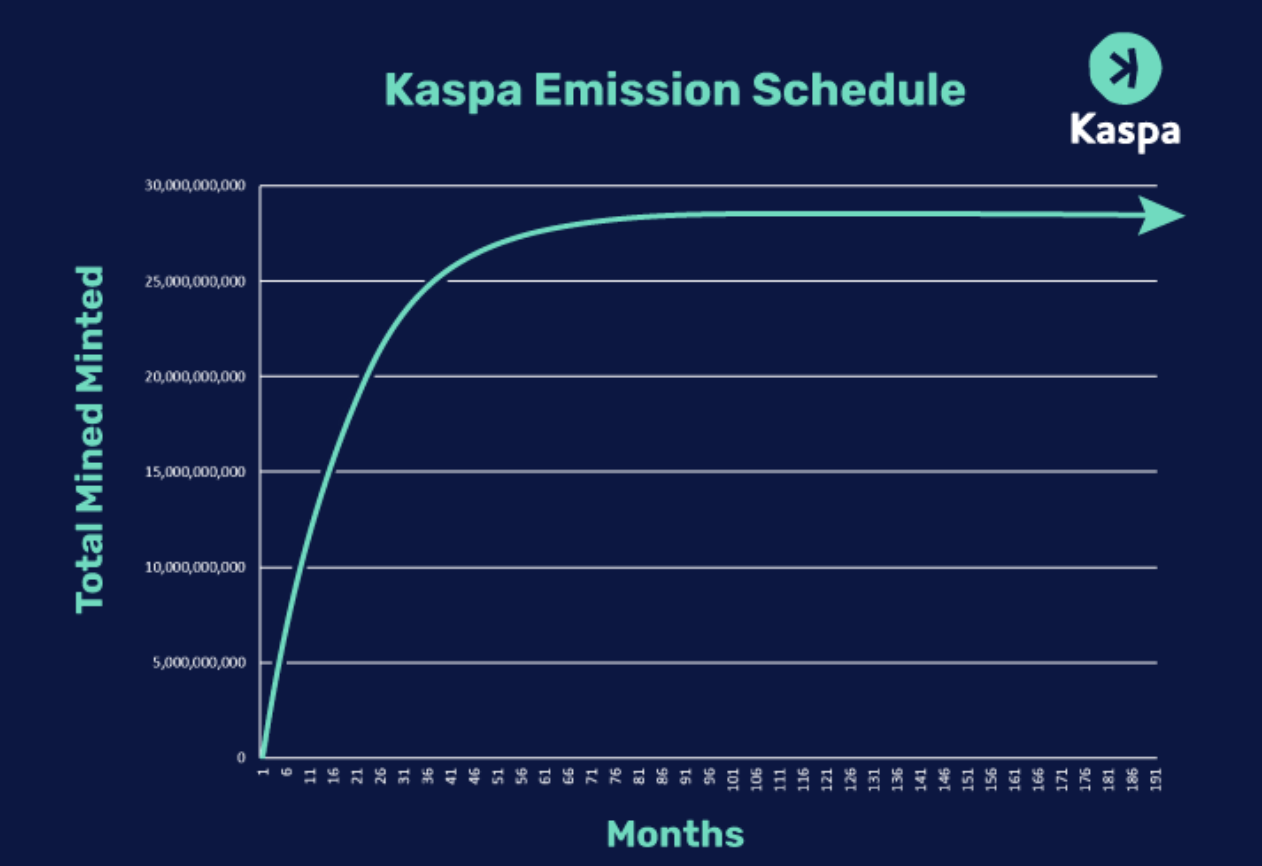EDX Markets, a crypto exchange with a Wall Street background, went live in June 2023, which helped Bitcoin return to the $30,000 mark and sparked a week-long price growth in the crypto market. This, coupled with the impact of recent halvings, has convinced most crypto investors that a bull is on the horizon. Many miners now see 2023 as the beginning of a new crypto bull.
That said, the bullish trend expected from halvings, as seen with PoW coins like Litecoin, seemed to have materialized prematurely. Since the halving, the LTC price has retreated from around $93 to below $81. Similarly, Bitcoin, the crypto barometer, has kept fluctuating around $30,000. As the crypto bear continues to haunt the market, PoW miners still struggle with poor profits.
Despite the bearish trend, certain innovative PoW coins have not stopped shining. Kaspa, for instance, surged by over a hundredfold in just a year and now ranks among the top 50 cryptos by market cap.
Kaspa’s Law of Attraction 01
Kaspa’s native token, KAS, was officially introduced in November 2021, without any premine, presale, or team allocation. This move ensures that the project team cannot manipulate the market by reserving a massive holding of low-cost tokens. Every KAS is mined by miners paying for electricity and mining rigs, which is why many are impressed by its level of decentralization.
Kaspa’s Law of Attraction 02
Unlike Bitcoin, which features a four-year halving cycle, Kaspa undergoes halving every year, steadily reducing the block reward by a factor of (1/2)^(1/12) each month. According to its official website, the KAS supply is capped at 28.7 billion. Source: Kaspa
Source: Kaspa
Kaspa miners witness a gradual reduction in the KAS output at regular intervals. While the KAS hashrate reaches new heights, KAS undergoes a fixed monthly decline in output. This continues to drive up the mining cost, as well as the crypto’s base market price, fostering an upward spiral.
Kaspa’s Law of Attraction 03
Kaspa has been hailed as a rare innovation in the PoW market, and for good reason. It stands as the first project to adopt DAG (Directed Acyclic Graph), a notable departure from conventional blockchains. Leveraging blockDAG, Kaspa processes massive transactions in minimal time, while simultaneously generating multiple blocks at an average pace of one block per second.
As per Kaspa’s official statements, each existing KAS block can accommodate around 200 transactions, around 30 times higher than Bitcoin’s block capacity. Kaspa aims to generate 32 blocks per second, with the ultimate goal of 100 blocks per second. This technological innovation allows Kaspa to gain enhanced throughput and scalability.
Kaspa’s Law of Attraction 04
The KAS network now generates approximately 15.9838 million tokens every day, which translates to a daily output of around $720,000 based on the latest price ($0.045), ranking third among all PoW coins, next only to BTC and DOGE.
KAS now supports both GPU and ASIC mining rigs. Attracted by its robust price performance, upstream players like BITMIAN and ICERIVER have rolled out ASIC mining rigs tailored for KAS mining. Based on the profit ranking, we can tell that ICERIVER’s KS2, after accounting for electricity costs of $0.05 per kWh, yields a daily net profit of over $100; BITMIAN’s KS3 brings in a stunning $1,000 in daily net profit. Source: Minerstat
Source: Minerstat
The influx of high-performance mining rigs, however, has sent KAS hashrate soaring, raising concerns about revenues under the existing hashrate size in the miner community. The good news is that the KAS price has continued to surge. According to CoinMarketCap, over the last month, the price growth started at $0.0246 and peaked at $0.051, an impressive 107% increase. Even as mining difficulty escalates, the mining revenue has not seen any material impact, thanks to the price surge. Source: CoinMarketCap
Source: CoinMarketCap
ViaBTC has introduced the KAS mining pool, offering PPLNS and SOLO payment options.
Start mining KAS now on ViaBTC at https://support.viabtc.com/hc/en-us/articles/7207398646799 
About ViaBTC
ViaBTC, founded in May 2016, has provided professional, efficient, safe and stable crypto mining services for over one million users in 130+ countries/regions around the world, with a cumulative mining output value of tens of billions of dollars. This world-leading, all-inclusive mining pool offers mining services spanning more than ten mainstream cryptos that include BTC, LTC, and KAS. Backed by one-stop services covering ViaBTC Pool, CoinEx Exchange, and ViaWallet, ViaBTC strives to offer global users more abundant supporting tools, stabler and more efficient mining services, and better product experience.